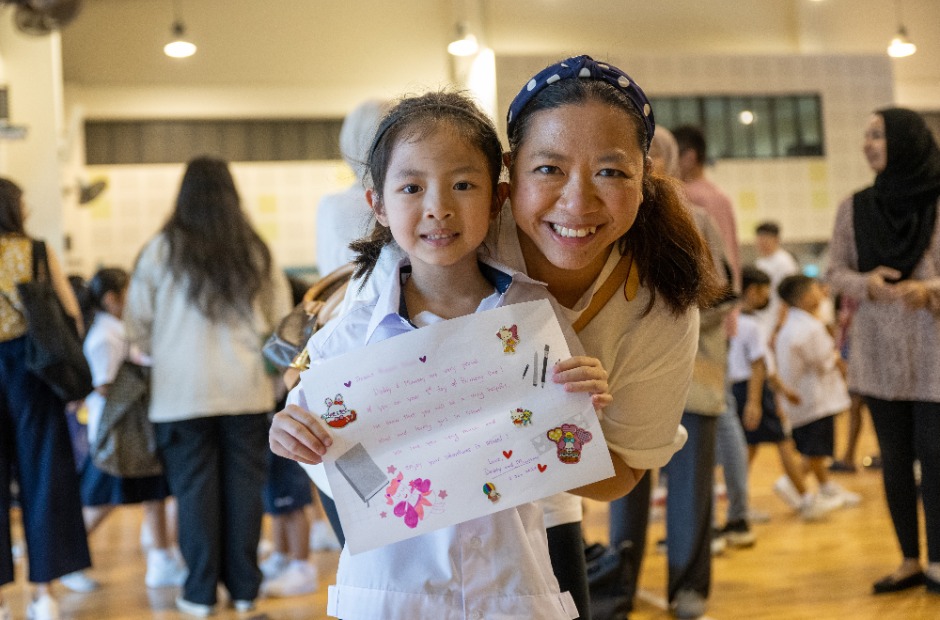Is it a ‘waste’ not to enrol my child in my alma mater?
04 Apr 2022
-(1).jpg)
Some parents jump through hoops to secure a spot for their child in their preferred primary school. Writer and mother-of-two Eveline Gan had alumni priority as an old girl of a school her mother went to as well. She shares why she decided to forgo the privilege for convenience when selecting a primary school for her daughters.
With around 180 primary schools in Singapore to choose from, there is no lack of choices for children starting formal education.
However, with choice comes decisions, so depending on a parent’s expectations and preferences, the Primary One Registration Exercise can either be a nail-biting experience or just another ordinary day.
I would know, having gone through this rite of passage as a parent to two girls aged 15 and nine years old.
When my firstborn started primary school, I was new to the Primary One Registration Exercise. I recall experiencing vacillating emotions of nervousness (“oh dear, what forms do I need to fill in? What happens if I miss the registration?”) and relative calm (“ohm, come what may”).
There was also self-doubt (“what if we made the wrong school choice?”). This was because my husband and I made the decision not to enrol our daughter in my alma mater – an all-girl’s school with secondary school affiliation. This came as a surprise to some people around us, as enrolling to an alma mater puts one in at Phase 2A – the second-earliest registration phase of the Registration Exercise – which would have given us a distinct advantage of securing a place in a school of our choice.
As all the girls in the family, including Grandma, studied in all-girls’ schools, there was also pressure to continue the family tradition. But I had other considerations in mind.
Getting to know the P1 Registration phases
For the uninitiated, there are several ways for parents to get entry to a school, if your child does not qualify for Phase 1 of the registration. The first phase is open to children with siblings who are already studying in the school.
Phase 2A is open to several groups including those whose parents are members of a school’s alumni association or the school’s advisory or management committee, under Phase 2A(1).
Back then, my daughter would have been placed under Phase 2A(2), which is open to children whose parents had studied at the school or had another child who previously studied there.
From this year (2022), 2A(1) and 2A(2) are collapsed into a single 2A phase.
Next is phase 2B. This is open to children whose parent joined the school as a parent volunteer or is a member endorsed by the church or clan directly connected with the primary school. A child whose parent is endorsed as an active community leader may also register under this phase.
Phase 2C caters to all other children who are not yet registered with a school. If the preferred primary school has more registrants than vacancies, priority is given based on the child’s citizenship and the distance from home to school. (More information can be found at the Ministry of Education webpage on the P1 registration exercise and phases.)
Why convenience matters
There are countless anecdotes of parents going to great lengths and jumping through hoops to ensure they can register their child during the earlier registration phases.
Some offer their time to become parent volunteers, others reportedly move across town to live nearer to their school of choice, because a narrower home-school distance could be an advantage when there are more applicants than vacancies.
While my husband and I may disagree over many things during the course of our marriage, the decision to try our luck with a primary school nearest from our home under Phase 2C was unanimous.
It takes just five minutes to walk there from our HDB flat, a boon for a work-at-home parent like myself.
By comparison, the primary school that I had previously studied at is a 30-minute car ride away. By public bus, the journey would have taken more than an hour, not counting waiting time.
Another factor was that my second child had just been born at the time, further reinforcing the need for convenience.
We do not drive. So imagine having to lug a baby around while spending more than two hours each day, ferrying your primary school kid to and from school by bus. Or having to hail a taxi to bring a sick kid home on a school day – something every parent of a young child would likely experience at some point.
While there is another more well-known school located within walking distance of our flat, a quick check with some neighbours living nearby revealed that it was likely to be highly over-subscribed during the registration exercise.
If the balloting did not work in her favour, my daughter would be placed in a school that is located further away from home. So, we avoided registering with that school to avoid adding unnecessary stress on ourselves.
In the end, we were elated when our firstborn was placed in our preferred nearby primary school under Phase 2C.
All that went through my mind when we received the good news was “yay, we can still make it to school in time even if we wake at 7am”.
Meanwhile, my daughter did not really care whether she had secured a place in school A, B or C. At that young age, her main concern was whether the school canteen served up delicious food at recess, specifically, her favourite spaghetti bolognese.
Primary school experience that was just as fulfilling
As a parent, I have learnt that the early school years are a whole-family affair. It involves navigating the logistics of ferrying a young child to and from school, working hand-in-hand with their teachers to nip any unwanted behaviours and encouraging a healthy attitude towards learning and socialising with their peers.
Some people have commented that it is a “waste” to not enrol my child in my more familiar alma mater. It also means we lose the advantage that affiliation offers, which usually translates to lower entry scores to the secondary school. But I do not think it was a waste. I was glad we had chosen what was, and is still, right for our children and family.
On the multiple occasions when my daughter fell ill and had to return home early, or forgot her water bottle or pencil case enroute to school such that we had to head back for the item, I was glad that school was just minutes away from home.
During my older daughter’s time in primary school, the warmth, support and dedication she received from her teachers were no different from all that I received from the teachers who had previously taught me.
This further reinforced my belief that when it comes to education, the teachers on the ground, and not the name of the school, play a crucial role in making every child’s school experience a meaningful one.
Naturally, as parents, we all want our children to have a good head-start in life and do well. But even as we help them reach their potential, I think it is important to remember that the young ones take their cues from the adults around them.
What message do we send to our children when for example, we express disappointment or anger when they do not secure a spot in a popular school? Or when we say things like “Oh, I hope you know how lucky you are because Mummy and Daddy moved house just so you can go to this or that primary school”?
Ultimately, every young child needs one main thing to thrive and be well-adjusted during their primary school years: Loving, supportive adults at home and in school. Everything else, in my opinion, is just a good-to-have, but not a must-have.
By the time my younger daughter’s Primary One Registration Exercise came round, I no longer had any self-doubt.
We enrolled her under Phase 1, in the same school that her older sis was attending, knowing that she too, would have access to the same fulfilling primary school experiences and amazing teachers – just five minutes away from home.



.jpg)
.jpg)
